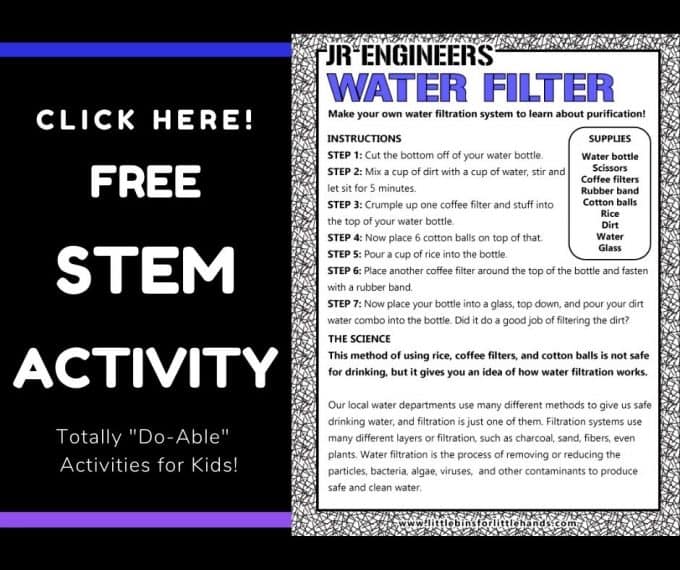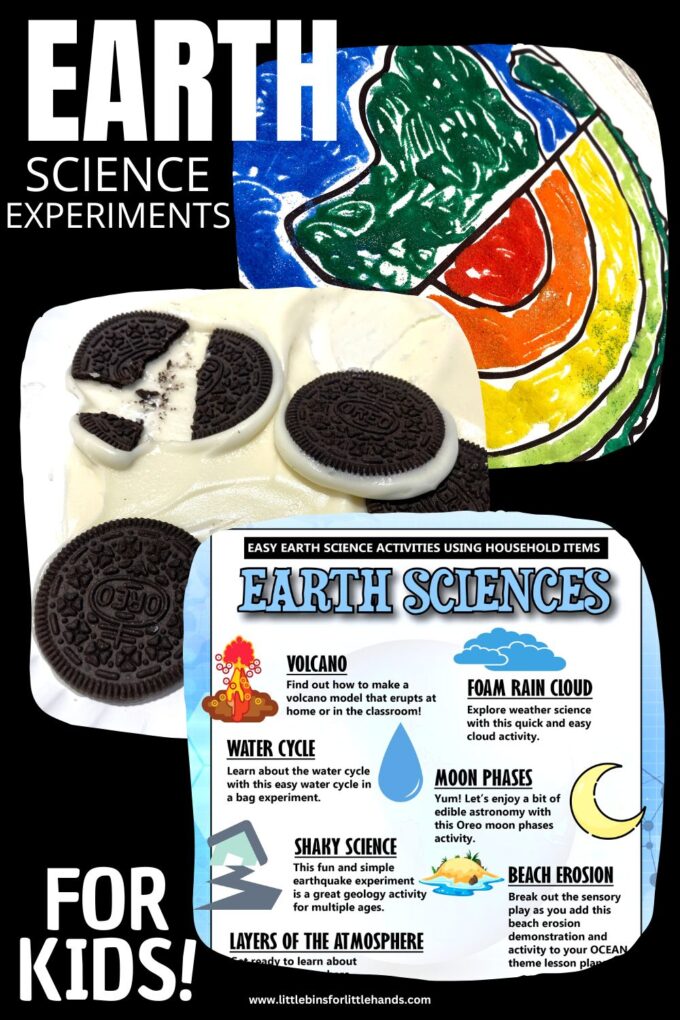Can you purify dirty water with a water filtration system? Learn about filtration and make your own water filter at home or in the classroom. All you need are simple supplies and some dirty water you can mix up yourself to get started. Look for tips to turn it into a STEM challenge for older kiddos. Grab the printable instructions and get started! We love fun, hands-on STEM projects for kids!
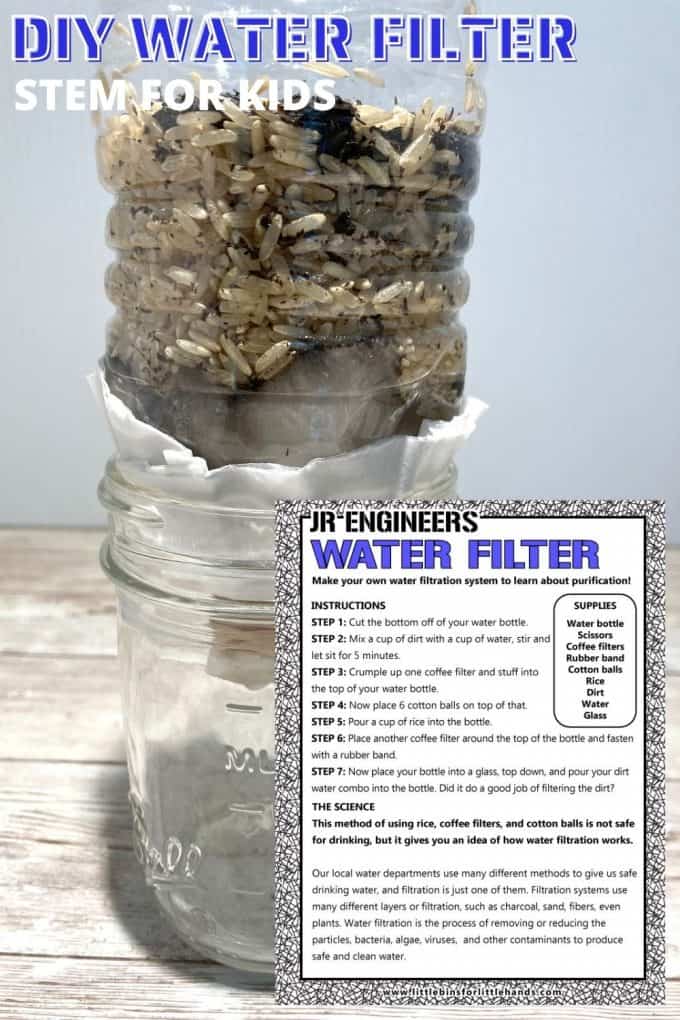
How to Filter Water
Our local water departments use many different methods to give us safe drinking water, and filtration is just one of them. Filtration systems use many different layers or filters, such as charcoal, sand, fibers, even plants.
Water filtration is the process of removing or reducing the particles, bacteria, algae, viruses, and other contaminants to produce safe and clean water.
This water filtration lab below uses coffee filters and cotton balls to filter your dirty water. How clean can you get your water? Let’s find out!
NOTE: It is important to share with your students or kids that the water filters you make today will not remove ALL impurities (like bacteria) from the water, but it’s a good visual representation of how filtering water works.
Water Filtration Activity
NOTE: This method of using rice, coffee filters, and cotton balls is NOT SAFE for drinking, but it will give you an idea of how water filtration works.
FREE WATER FILTRATION PROJECT LESSON!
SUPPLIES:
- Water or soda bottle (cap removed)
- Scissors
- Coffee filters
- Rubber band
- Cotton balls
- Rice (optional: use aquarium gravel or sand instead)
- Dirt
- Water
- Clear jar or cup (bottom of the filter)
- Paper towels
INSTRUCTIONS:
STEP 1: Cut the bottom off of your water bottle. The shape of the cut portion looks like a funnel when you place it upside down in the jar.
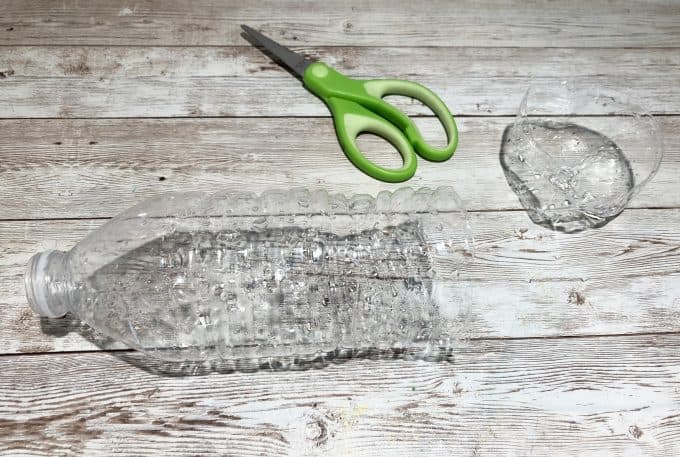
STEP 2: Mix a cup of dirt with a cup of water, stir and let sit for 5 minutes. You can add crumbled, dead leaves and small twigs for larger particles.
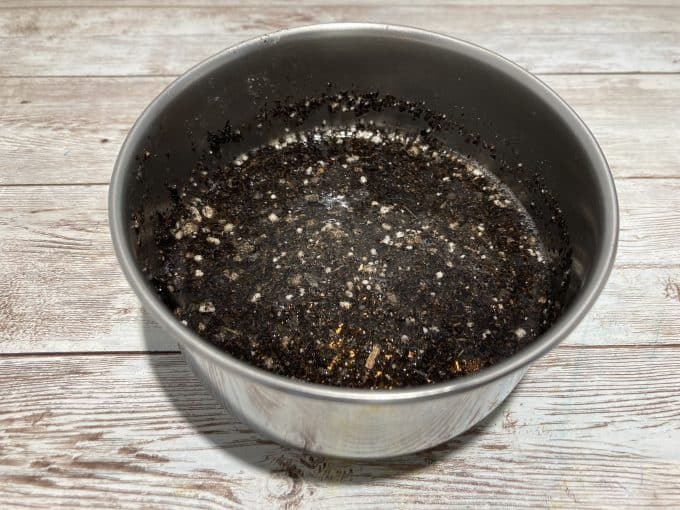
STEP 3: Crumple up one coffee filter and stuff into the top of your water bottle.
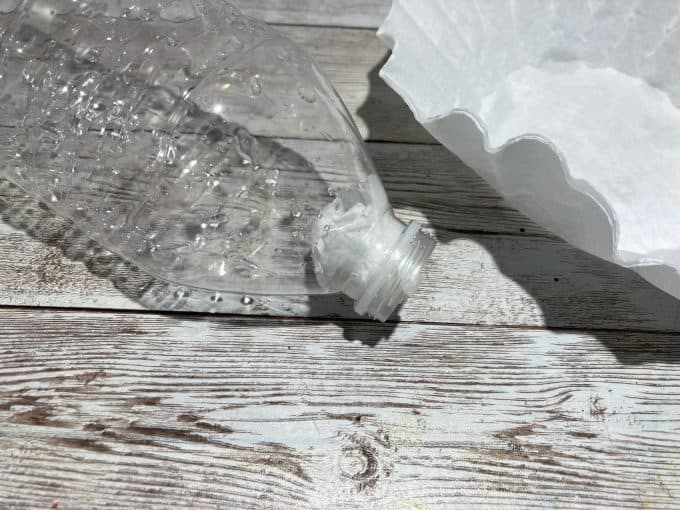
STEP 4: Now place 6 cotton balls on top of that.
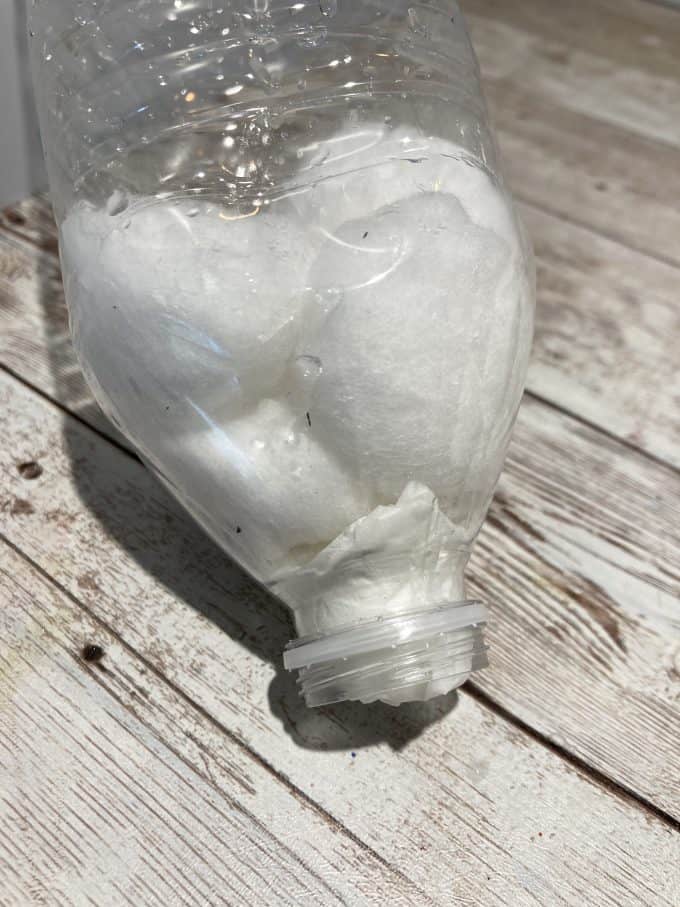
STEP 5: Pour a cup of rice into the bottle.

STEP 6: Place another coffee filter around the top of the bottle and fasten with a rubber band.
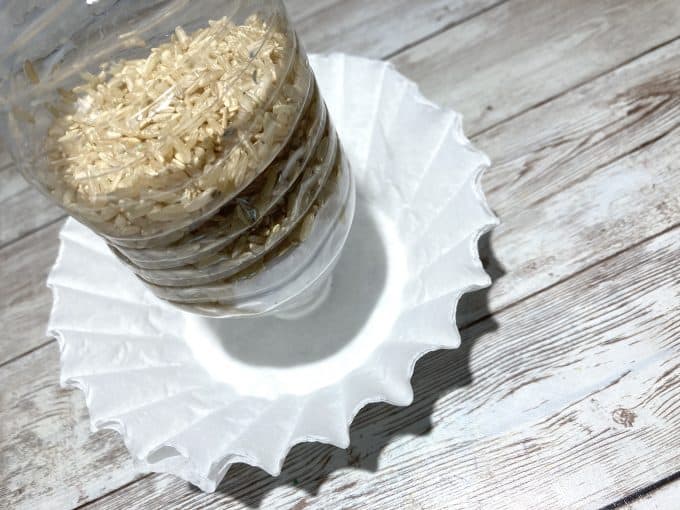
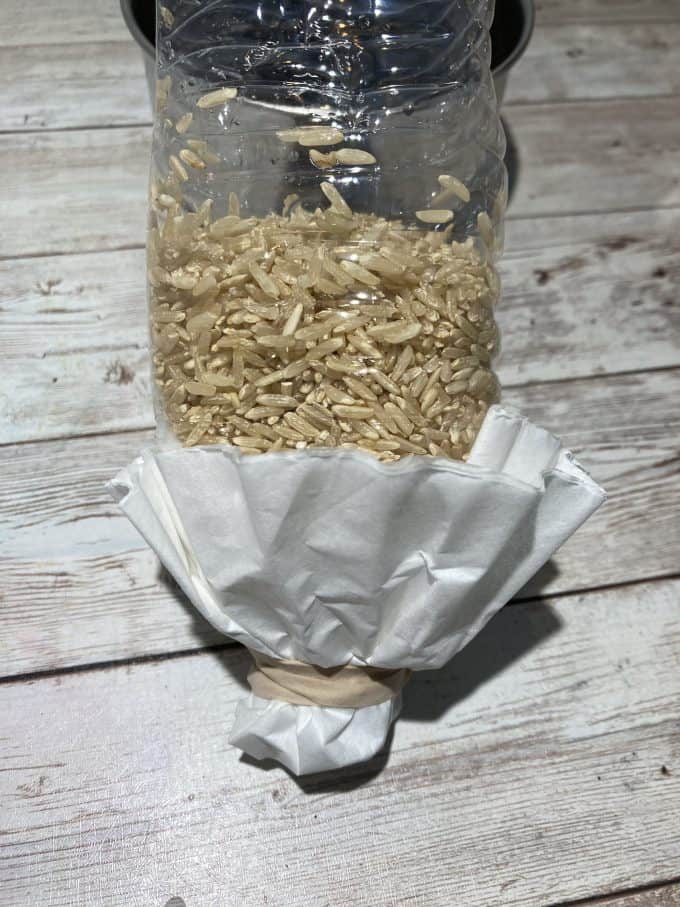
STEP 7: Now place your bottle into a glass, top-down, and pour your dirt water combo into the bottle.
Pay close attention to the filtration process and compare the before and after! Did it do a good job of filtering the dirt?
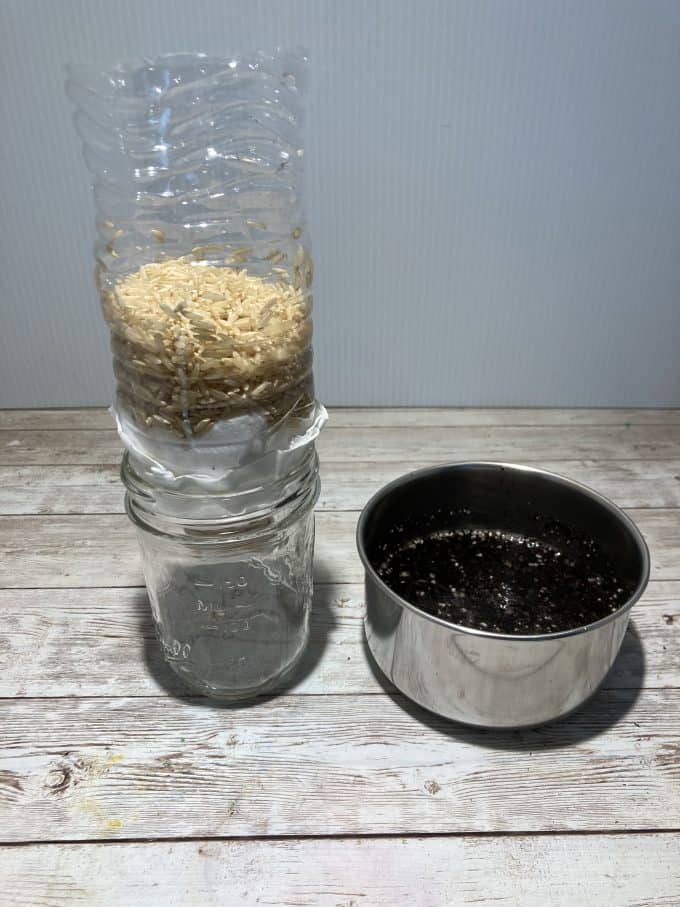
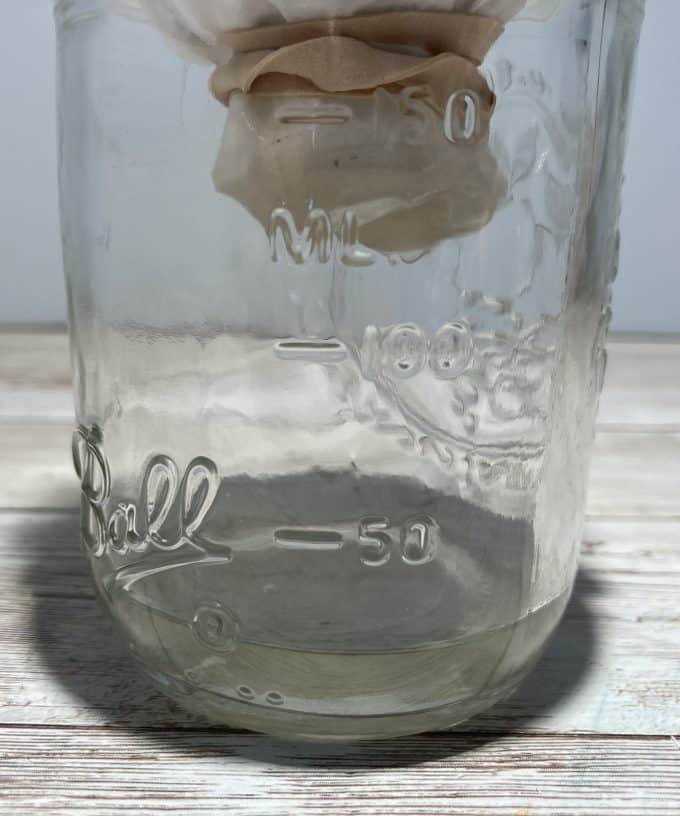
STEP 8: Re-filter the water several times and take notes or take pictures of the water’s appearance each time.
Could you redesign the filter with different filtration materials to do a better job?
What is Polluted Water?
Polluted water can be found everywhere due to litter being thrown on the ground that travels through storm drains, rivers, lakes, and oceans. Oil spills and trash from boats can cause major problems in the oceans.
Stormwater runoff is also another water pollutant. Polluted water is unsafe to drink and deadly for the plants and animals that need the water to survive. Even learning about the water cycle is important!
Project Tip: Take a walk and collect any trash that you find along the way in a bag. When you get home fill a large jar with water and add the trash. Seal the lid and observe what happens.
⭐️ Ensure it is safe to do this in your area, wear protective gear, and wash your hands well afterward.
Suggestions To Turn This Activity Into A STEM Challenge
Provide students with various filter materials, including coffee filters and cotton balls, aquarium gravel (pet stores), sand, rocks of different sizes, and whatever else you want to add!
TIP: One of the keys to achieving cleaner water with your filter model is to slow down the water flow through various materials. What combination of materials will allow the water to flow slowly?
Questions to Ask:
- Does the order of materials matter? Why or why not? (Hint, the answer is yes!)
- Do different materials filter smaller particles or bigger particles?
- Does the water get cleaner if you run it through the filter more than once or twice?
- What other suggestions do you have for filtering water?
Make it a Science Fair Project
Science projects are an excellent tool for older kiddos to show what they know about science! Plus, they can be used in various environments, including classrooms, homeschool, and groups.
Kids can take everything they have learned about using the scientific method, stating a hypothesis, creating variables, and analyzing and presenting data.
Want to turn this water filter activity into an awesome science fair project? Check out these helpful resources.
More Helpful Science Resources
Here are a few resources to help you introduce science more effectively to your kiddos or students and feel confident when presenting materials. You’ll find helpful free printables throughout.
- Best Science Practices (as it relates to the scientific method)
- Science Vocabulary
- 8 Science Books for Kids
- All About Scientists
- Science Supplies List
- Science Tools for Kids
More Fun Things To Build
Build a DIY thermometer.
Make your own homemade air cannon and blast down some dominoes.
Make a homemade magnifying glass.
Build a compass and work out which way is true north.
Construct a working Archimedes screw simple machine.
Make a paper helicopter and explore motion in action.
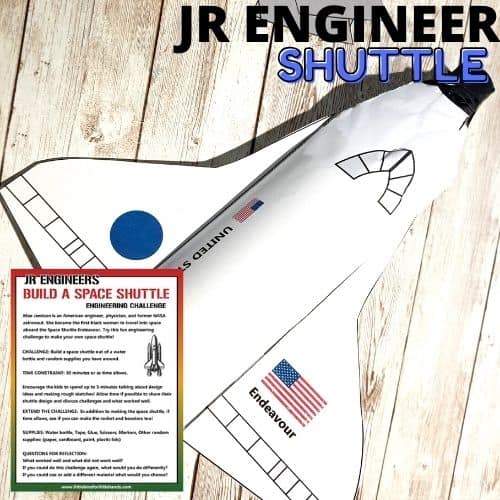

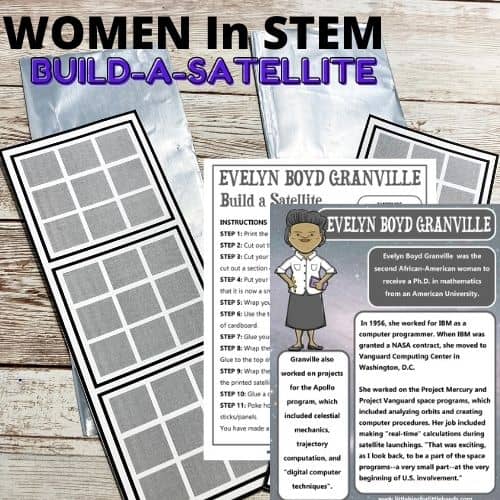

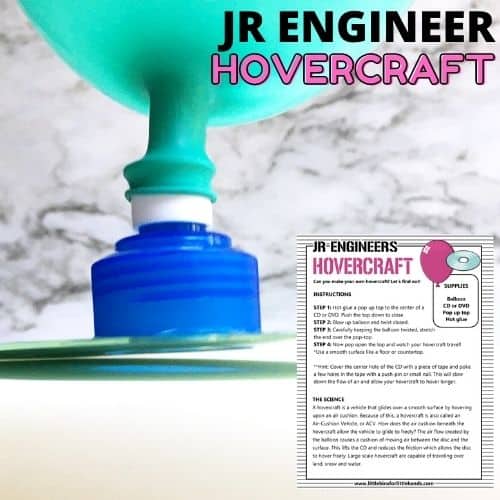
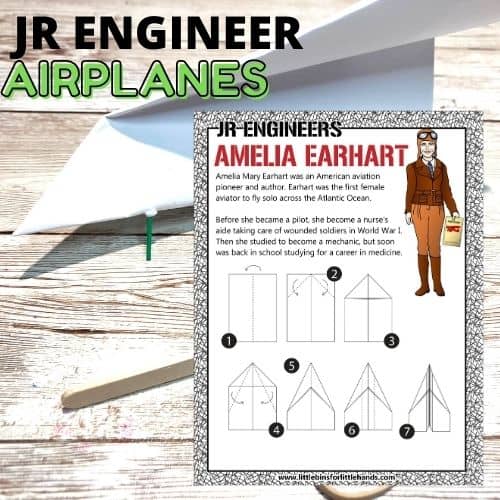
Dive into Earth Science for Kids
Check out this fantastic variety of Earth Science projects for kids, from the oceans to the rocks to the clouds and the atmosphere.


